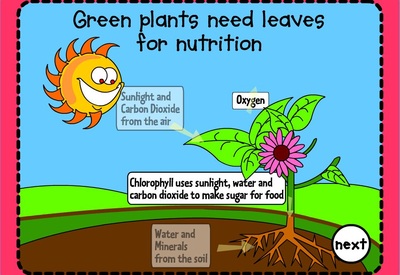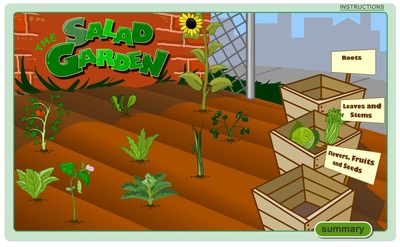PLANTS
Plants are living things. They have the following characteristics:
·
They need water, air, sunlight and minerals.
·
They make their own food.
·
They forms seeds to reproduce.
·
They can not move by themselves, but they react to the
environment.
PARTS
OF A PLANT
There are many different types of plants, but all have roots, a stem and
leaves.
ROOTS
The roots are the part of the plant that grow underground, in the soil.
·
They hold the plant in the ground. Through them, a plant gets the water and minerals salts
it needs.
The roots of a plant hold it
in the ground and a plant gets the water and mineral salts it needs through
them.
THE STEM
The stem is the part of the plant that grows above the ground. It usually has branches that have leaves. Two
types:
·
Woody stems. They are hard. Trees have Woody steams
·
Non-woody stems. They are soft and flexible. Grass
The stem grows above the ground. It can be woody or non-woody.
We classify plants into three groups depending on their stems:
- Trees have a hard, Woody stem.
- Bushes have a hard, Woody stem but is much sorter. The branches are very close to the ground.
- Grasses have soft stems, and they do not usually grow very tall. They do not have branches.
LEAVES
The leaves are the green part of
a plant that grow from the stem or branches. They are the places where plants
make their own food from substances
they get from outside.
Some trees lose all their leaves in autumn. These are deciduous trees. Others do not lose all their leaves at one time, but
change little by little. These are evergreen
trees.
Leaves are the green parts of plants. They are where
plants make their own food.
Plants have different leaves shapes,
here we have some examples:
NUTRITION OF PLANTS
Plants make their own food in their leaves. They use substances they get
from outside.
·
First, they absorb water and minerals salts from they
soil through their roots.
· The water and mineral salts moves through the stem and
branches until it reaches the leaves.
· In the leaves, mineral salts and water turns into food
thanks to substances the plant gets from the air and sunlight.
Plants make their own food from water and mineral salts
they get from the soil and
substances from the air and sunlight.
REPRODUCTION
OF PLANTS
Flowers have the organs that carry out the function of reproduction.
FLOWERS
These are the most important parts of a flower:
- Calyx: It is a group of many small green leaves. These leaves are sepals. The calyx protects the flower.
- Corolla: It is a group of coloured petals. The corolla is a round the organs that carry out the function of reproduction.
- Stamens: These are the male reproductive organs. They are long and have round ends. These round ends have pollen.
- Pistil: It is the female reproductive organ. It has the sape of a bottle. It has got ovules inside.
Flowers have a calyx,
a corolla, a pistil and stamens.
FRUIT AND SEEDS
When polen grains enter the pistil, the flowers start to change. It loses
its petals and the pistil becomes a fruit. There are seeds inside the fruit
A fruit is a
transformed pistil. There are seeds
inside the fruit.
PHOTOSYNTHESIS
All living things need energy to live, and energy comes from food.
Photosynthesis is
the process by which plants make their own food, this process takes pace in the leaves of plants.
To make food plants need:
·
carbon dioxide
·
water
·
sunlight
Let’s take a
look at how these are collected by plants.
·
Carbon dioxide
from the air passes in the leaves.
·
Water is
absorbed by the roots and passes through the stem to the leaves.
·
Sunlight is absorbed
by the leaves thanks to the Chlorophyll.
With the mixture of water, sunlight and carbon dioxide plants get energy. At
the end of this process plants release oxigen.
WHAT DO YOU KNOW ABOUT PLANTS?
Have a look to check what you know
Here you will find a lot of useful information for the classroom activities.
But you don´t need to study all the book!!! 😊😊😊😊
Now try these activities and games to practice what you are learning
Good Luck!!!!

















